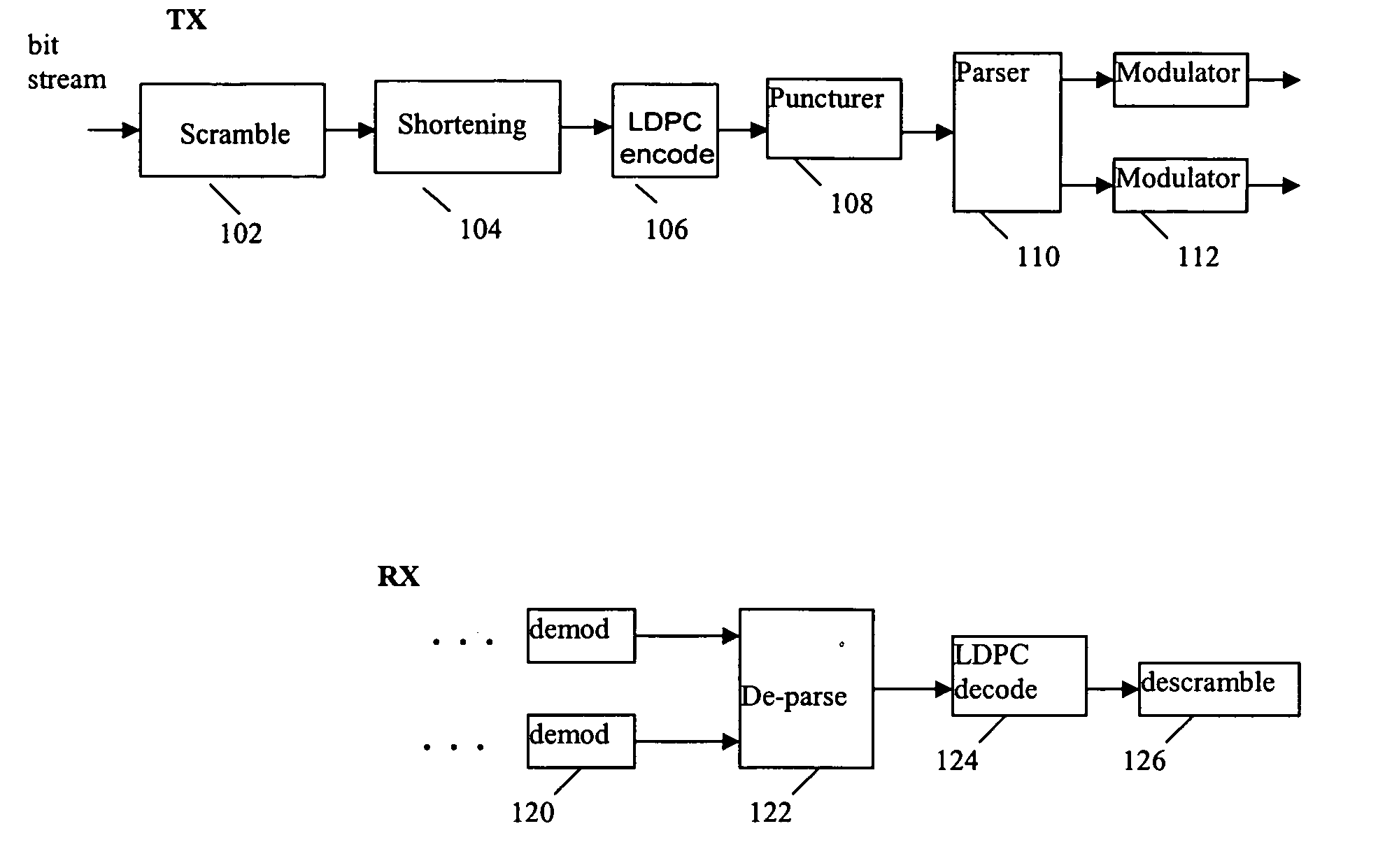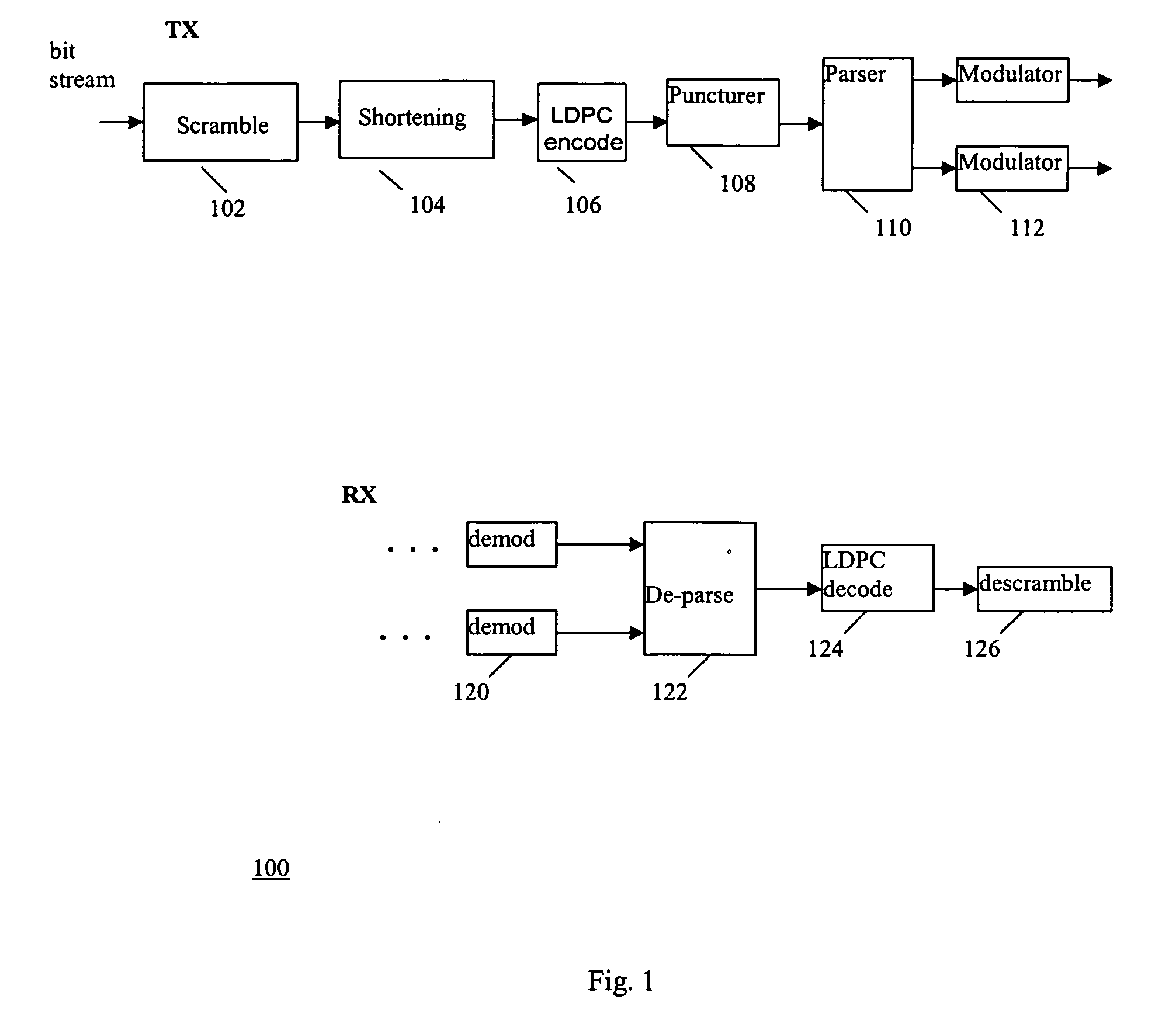LDPC concatenation rules for IEEE 802.11n system with packets length specified in OFDM symbols
a technology of concatenation rules and packet lengths, applied in the field of low density parity check codes for wireless systems, can solve problems such as limited code size, and achieve the effect of minimizing ofdm symbol padding and minimizing ofdm symbol padding
- Summary
- Abstract
- Description
- Claims
- Application Information
AI Technical Summary
Benefits of technology
Problems solved by technology
Method used
Image
Examples
Embodiment Construction
[0019] The present invention provides an improved LDPC encoding for MIMO wireless WLAN systems. A method of concatenation for LDPC encoding in an OFDM wireless system according to the present invention selects codewords based on the data packet payload size and transmission rate, wherein the payload size is the number of transmitted information bits in OFDM symbols. For low transmission rates, shortening and puncturing across all codewords within the packet is applied to minimize OFDM symbol padding. For high transmission rates, only shortening across all codewords within the packet is applied to minimize OFDM symbol padding.
[0020] To help in understanding the present invention, relevant details of the aforementioned TGn Sync modification in HTLENGTH definition and a current LDPC concatenation rule are first described.
Modified HTLENGTH
[0021] For the modified HTLENGTH description, the existing 1-bit AGGREGATE and 18-bit HTLENGTH fields in the HT SIGNAL field are replaced by a sin...
PUM
 Login to View More
Login to View More Abstract
Description
Claims
Application Information
 Login to View More
Login to View More - R&D
- Intellectual Property
- Life Sciences
- Materials
- Tech Scout
- Unparalleled Data Quality
- Higher Quality Content
- 60% Fewer Hallucinations
Browse by: Latest US Patents, China's latest patents, Technical Efficacy Thesaurus, Application Domain, Technology Topic, Popular Technical Reports.
© 2025 PatSnap. All rights reserved.Legal|Privacy policy|Modern Slavery Act Transparency Statement|Sitemap|About US| Contact US: help@patsnap.com



